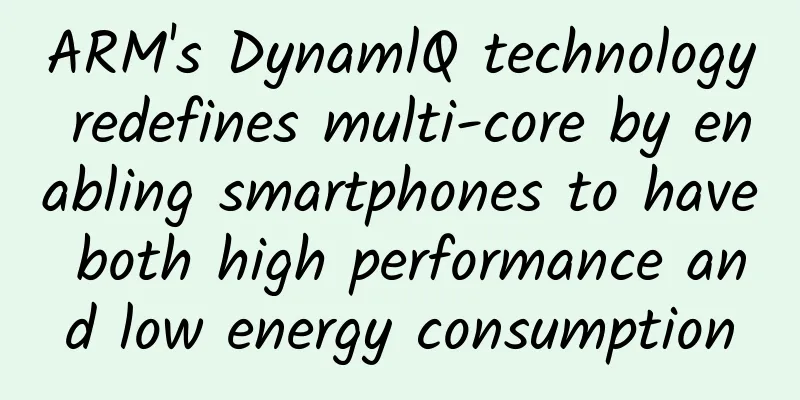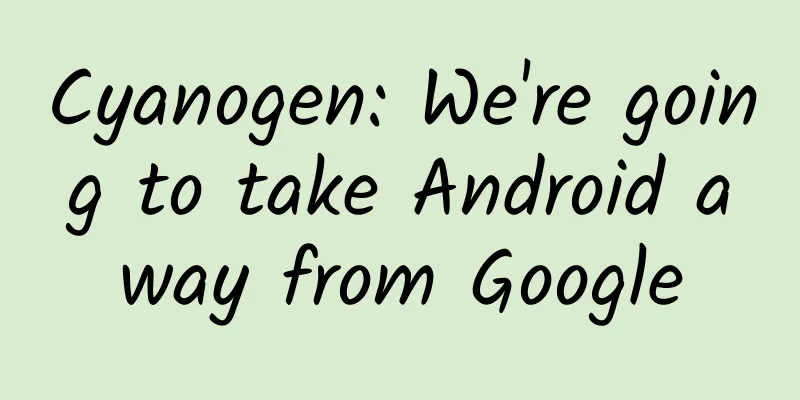ARM's DynamlQ technology redefines multi-core by enabling smartphones to have both high performance and low energy consumption

|
The computing field has always been pursuing higher performance and breakthroughs. However, in the field of mobile computing, performance is constrained by energy consumption indicators due to the compromise of portability. Achieving a delicate balance between performance and energy consumption, so that mobile devices, such as smartphones, have both excellent performance and excellent battery life, has long been a challenge faced by ARM engineers. In response to this, in 2011, ARM launched the world's first heterogeneous processing technology for the mobile phone market - big.LITTLE. The architecture of this technology includes a high-performance "big" CPU cluster and a high-efficiency "small" CPU cluster, which are connected through consistent interconnection. Software running on this architecture can schedule the correct application tasks to the correct CPU. In the following years, as CPUs continued to evolve, the software layer was also updated, introducing more intelligent task scheduling algorithms. However, during this period, the hardware technology architecture remained basically unchanged, with several CPU clusters of different sizes. This technology was quickly adopted in the mobile phone market. As a result, two-thirds of the Android devices shipped today based on ARMv8 rely on big.LITTLE to optimize power consumption and performance. In order to further optimize the performance and energy consumption of mobile devices, ARM recently released its latest technology DynamIQ, which has aroused strong interest from the technology industry and "technology enthusiasts" because of its far-reaching impact on the future development of big.LITTLE technology and may even subvert the field of mobile computing on a large scale. DynamIQ technology brings a new technology architecture that can change the landscape of heterogeneous processing by merging two clusters, big and small, to form a fully integrated CPU cluster with both big and small CPUs. The big.LITTLE design built with DynamIQ technology is called DynamIQ big.LITTLE. DynamIQ big.LITTLE technology introduces intelligent power consumption capabilities in the CPU cluster, which helps maximize performance within a certain heat output. This means more powerful data processing capabilities and performance, creating a richer experience in all applications. The arrival of DynamIQ big.LITTLE technology will bring many benefits to consumers and mobile device manufacturers. Fully integrated solutions provide broader product differentiation Consumers have been expecting more computing power from their smartphones - this is true for every new device released, whether it is a high-end smartphone or an entry-level model. It is fair to say that PokemonGo became the number one must-have app after it hit the mobile market in 2016, even on entry-level smartphones. In order to meet consumers' demand for higher performance, especially in price-sensitive markets, product differentiation within SoCs has become more important. New integrated clusters in DynamIQ big.LITTLE systems introduce new combinations that broaden product differentiation. These new combinations will allow "big" CPUs to be increasingly used in the mid-range market to achieve performance levels compared to traditional designs with only "small" CPUs. However, the scope of scalability does not end there. DynamIQ big.LITTLE systems also allow single or groups of CPUs within a cluster to be tuned to different performance and power points, extending the design possibilities to nearly endless levels. The high degree of flexibility provided by DynamIQ creates differentiation opportunities in price-sensitive markets. Improved single-threaded performance brings a better user experience While the user experience is constantly changing as applications evolve, one thing remains constant: the user experience is highly dependent on single-threaded computing performance for responsiveness. Advanced uses such as artificial intelligence and augmented reality will continue to place higher demands on the user experience. However, the mobile market is quick to remind us that heat limits the amount of performance that can be achieved by a device. The scope of the thermal efficiency issue has expanded beyond the mobile market and it is also a major factor in other markets such as automotive and laptops. To overcome this problem, big.LITTLE relies on technologies such as dynamic voltage/frequency scaling to achieve two complementary performance domains, each of which can consistently adjust voltage and frequency. DynamIQ further develops this technology by supporting multiple configurable performance domains in a single cluster. These performance domains are composed of single or multiple ARM CPUs and can be adjusted in terms of performance and power consumption with greater granularity, achieving up to 4 times improvement in adjustment accuracy over previous Cortex-A quad-core clusters. The nature of this DynamIQ technology means that DynamIQ big.LITTLE systems can squeeze more performance out of tighter thermal constraints, resulting in longer performance durations. Such systems can also take advantage of momentary performance boosts, resulting in faster responsiveness and a better user experience for activities such as app launches or gestures such as rotation, swiping and pinch-to-zoom on a touchscreen or touchpad. Improved energy efficiency through advanced power management features As competition in the mobile computing market, such as smartphones, becomes increasingly fierce, consumer demand is also being magnified by the market. Consumers are paying more and more attention to the energy consumption and battery life of devices, and they have become the user pain points that manufacturers focus on. In the DynamIQ big.LITTLE system, all task transfers between large and small CPUs can now be performed within a single CPU cluster through shared memory, and the transfer of shared data between "big" CPUs and "small" CPUs can also be performed within a single cluster. From a system perspective, this reduces data traffic, thereby reducing power consumption and bringing advantages to overall system efficiency. In addition, thanks to the larger cache space in the CPU cluster, it is possible to perform a larger amount of heterogeneous processing within the cluster, which can reduce access to external memory, thereby reducing the power consumption of the system when running certain applications. This also means reducing the CPU data waiting time, thereby also improving performance while reducing power consumption. DynamIQ big.LITTLE also leverages the advanced power management capabilities of DynamIQ technology. DynamIQ systems are designed to accelerate transitions between different CPU power states, such as power on, power off, and hibernation. This reduces the time it takes for the CPU to enter standby mode or power-down mode, making transitions in and out of standby states more efficient. In addition, there is an automatic memory power management feature that intelligently adjusts the amount of local memory available in the cluster based on the type of application running on the CPU. Next-generation innovative user experience In summary, big.LITTLE improves power consumption and thermal efficiency in constrained environments, increases the computing power of devices, and provides consumers with a richer user experience. DynamIQ technology has ushered in a new era of heterogeneous processing. DynamIQ big.LITTLE improves the efficiency of high-performance advanced uses such as AR and VR, opening a new era of rich and innovative user experiences. With DynamIQ technology, mobile computing technology has taken another big step forward, giving manufacturers of mobile devices such as smartphones more room to maneuver. Consumers can expect to get high-quality products with further improvements in performance and energy consumption in subsequent product updates. As a winner of Toutiao's Qingyun Plan and Baijiahao's Bai+ Plan, the 2019 Baidu Digital Author of the Year, the Baijiahao's Most Popular Author in the Technology Field, the 2019 Sogou Technology and Culture Author, and the 2021 Baijiahao Quarterly Influential Creator, he has won many awards, including the 2013 Sohu Best Industry Media Person, the 2015 China New Media Entrepreneurship Competition Beijing Third Place, the 2015 Guangmang Experience Award, the 2015 China New Media Entrepreneurship Competition Finals Third Place, and the 2018 Baidu Dynamic Annual Powerful Celebrity. |
<<: There is actually not much difference between i5 and i7. How should I choose a laptop CPU?
Recommend
Analysis of Taobao and Douyin’s live e-commerce competitors
This article focuses on Douyin e-commerce, analyz...
German PzH2000 self-propelled howitzer
Since the German Army received the first PzH2000 ...
Why do I always feel my phone ringing? Is it an illusion? The truth is not simple
This article was reviewed by Dr. Tao Ning, Associ...
Will people who rely on coffee to "extend their lives" be healthier?
Coffee is a daily drink in modern people's li...
How many hairs do you have to lose every day to be at risk of baldness?
One minute with the doctor, the postures keep cha...
Cross-desktop componentization practice
Background Windows Qianniu has a lot of functions...
Carrageenan is actually a "good glue"
Have you heard about the news in the food industr...
The Great Voyages of Discovery丨Why do Chinese ancient ships stand out in the world?
Ships have evolved from prehistoric wood-cut boat...
July new media operation and promotion hot calendar!
Whether it is new media, marketing, event plannin...
Tik Tok live broadcast room accurate collection of customer acquisition tools sold outside 200 [customer acquisition artifact] [permanent version script + operation tutorial]
Douyin live broadcast room accurate collection of...
Deeply devoted to the grass, with a rolling green shade of love (Part 2) - The "king of ferns" that lived in the same era as the dinosaurs, a review of the "living fossils" in the plant world
Produced by: Science Popularization China Author:...
Why are planetary orbits elliptical? History of the development of the theory of planetary motion
A few years ago, I casually asked an astronomer: ...
Apple product system comprehensive upgrade IOS15 is coming
Recently, there is news that Apple will release t...
Landing page conversion is poor? 3 reasons!
The quality of the landing page is related to the...
Why is critical thinking important?
Every day, we are exposed to a lot of information...









